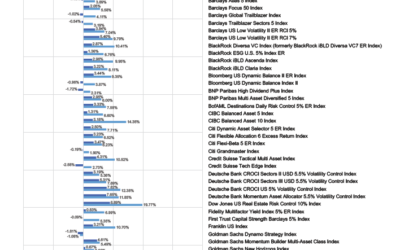What happened to Silicon Valley Bank– along with Signature Bank – that represents the two largest bank failures since the financial crisis? Silicon Valley Bank failed because of six primary reasons, among other things:
- Deposits Drying Up: Deposits were drying up relative to in the past and relative to SVB’s expectations. Because SVB’s customers were largely startup companies and because the economy had been rough on those startup companies, that meant these customers needed their cash back from the bank (SVB). Furthermore, with deposit interest rates being less than other places that startups can put their money, deposits left SVB.
- Selling Assets at Losses: Because of the above loss in deposits, the bank needed to raise capital in order to meet reserve requirements that banks have to abide by. They did this by selling long-term bonds that were not yet at maturity. Much of these bonds were treasury bonds that they had to sell at significant losses. These losses were because of the fact that interest rates have risen so much over the last couple of years.
- Run on the Bank: Because of the concerns of these losses that Silicon Valley Bank was now recognizing, there was a good old-fashioned “run on the bank”. These startup companies swarmed to the bank to take out their deposits they had at the bank, which further exacerbated the issue.
- Account Sizes That Exceed $250,000: The run on the bank happened because the average account balance at Silicon Valley Bank was well into the seven-figures versus the $250,000 that FDIC covers. As a matter of fact, somewhere around 90% of the $175 BILLION that the bank had in deposits was “uninsured”; meaning that those dollars were above the $250,000 threshold. The FDIC was created back in the great depression (1933) to provide consumers with this protection and to avoid runs on the bank. However, when you have more than $250,000 at a bank, the FDIC insurance does little to keep you from “running to the bank” to get your money. Hence, in the SVB scenario, the government later rushed in to make an exception and back-stop all deposits, regardless of the size. The reason being, this was “systemically important” because of the dollar size we were looking at and the potential “contagion”. Note: I believe that large banks having a blank check by the government, that will unfortunately direct the flow of capital away from smaller regional banks to those large banks. The big will get bigger. But I digress.
- Asset/Liability Duration Mismatch: In my college banking classes, one of the most basic things we learned is that assets’ and liabilities’ duration should be matched to each other as much as possible. This is another reason that SVB failed. The liabilities – which were deposits – had a very short “duration“ relative to the assets backing them. The liabilities were not very sticky (obviously). The assets backing those liabilities were largely long-term bonds that needed to be liquidated. That in turn created significant losses, as interest rates have skyrocketed over the last year. To oversimplify, in a perfect – and impossible – world, the assets being liquidated would have been right at maturity when the deposits were fleeing, which would have avoided losses.
- Inverted Yield Curve: The inverted yield curve (brought on by the fed) hasn’t helped banks either. This means that short term interest rates are higher than long-term interest rates, to simplify. Because banks usually borrow money short term and lend money long-term, banks’ “net interest income“ has been suboptimal. Note: Insurance companies generally borrow money long-term and buy bonds that are long-term. Asset duration = Liability duration.
Are Annuity Companies Next?
I do not believe that annuity companies will follow the same path as Silicon Valey Bank (and other banks to come). There are two primary reasons for this:
- Stickier Business: Annuities with surrender charges and market value adjustments are significantly “stickier” to insurance companies than what bank deposits are to banks. Therefore, carriers being forced to raise capital because of “runs on insurance companies” is not likely. Even if that did happen, carriers have the ability to pass-through bond losses via “market value adjustments”; at least with annuities. MVAs were created for times like this and are a good thing in this type of environment because they insulate carriers from “interest rate risk” that pummeled SVB. Because of the inability of consumers to easily access their annuity money, the matching of duration on assets versus liabilities is much easier for insurance companies, which helps everybody – the companies and the consumers that rely on the financial stability of the companies.
- Reserve Requirements: Insurance carriers do not practice “Fractional Reserving” that banks utilize. “Fractional Reserve Banking” is a fancy term for, “If you deposit $10 at a bank, that bank only needs $1 on hand and can lend out or invest the other $9.” Of course that example assumes a 10% “reserve requirement” as set by the Federal Reserve. “Fractional Reserving” is leverage. To oversimplify, this means that the $100,000 that you see on your bank statement is backed by only $10,000 that the bank has on hand! Needless to say, this can create significant “asset sales” when the customers want their deposits back, as we saw with SVB. The banking regulators’ justification for the “Fractional Reserve System” is that the FDIC is “usually” there to back the deposits if the bank cannot. Plus, fractional reserving does create more money in an economy, which can be a good thing. Can be a bad thing too. Insurance companies are not able to use “Fractional Reserving”, but rather abide by a “Legal Reserve” system. This means that one dollar that customers have at an insurance company is backed by AT LEAST one dollar that the company can access. This might create less profit for insurance companies versus banks in good times, but it also means less drama than the banks in the bad times!
Now, a risk that insurance companies do face is, what if the bonds that the carrier purchased were bonds issued by one of these failing banks? This is indeed a risk that insurance carriers face, especially if this “crisis” gets worse. However, the reports that I have read show that the largest exposure to SVB by an insurance company was nothing of consequential size.
Contagion – in addition to direct exposure – is also a risk for insurance companies, at least if this crisis gets worse. An example of contagion might be, where an insurance company is exposed to a bond that was issued by a customer of the banks that went belly-up. Or, a bond that was issued by a bank of a customer that is a customer of a bank that went belly up.
Counterparty risk can also be a concern. A “counterparty” would be one of the banks where insurance companies buy their hedges/options from. If one of these banks go belly-up, the insurance companies would be left holding the bag on indexed products, or other areas in their portfolio where they have “hedged” certain risks. I don’t view counterparty risk as a huge concern at this point because insurance companies usually use the mega banks as “counterparties”. As mentioned, the mega-banks may actually get more “mega” as a result of what is happening.
I would not say that the current crisis that the banking industry is dealing with is a great thing for the insurance industry, but it is not necessarily a horrible thing either. Afterall, much of the money that is leaving banks is going to insurance companies, because of the ability to get higher rates on those savings. I would bet that anybody reading this article that does annuity business has had a client or two write a $100k check from their bank account to an annuity that is paying a higher rate of interest.
Additionally, because of the way the bond market works, investment grade corporate bonds’ yields have actually increased in recent days, even though the 10-year treasury has lost 60 basis points in a short time. Hence, credit spreads have increased. These higher corporate rates help insurance companies make even better products!!!
Lastly, in times of turmoil, annuities do well. Annuity sales did well in the great depression, they did well during the financial crisis, and they will do well now! In 2022 our industry experienced the best year on record from a nationwide sales standpoint and it will continue.














0 Comments